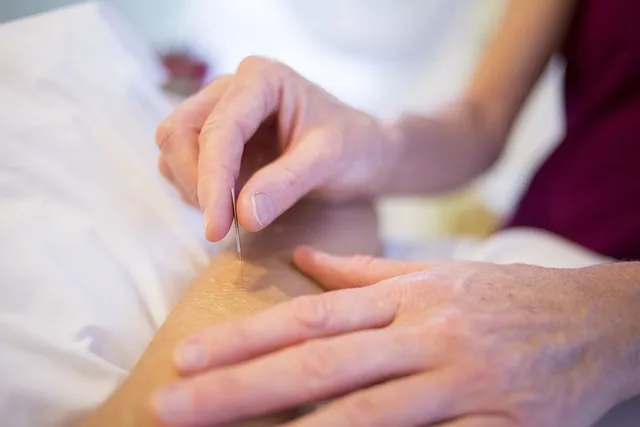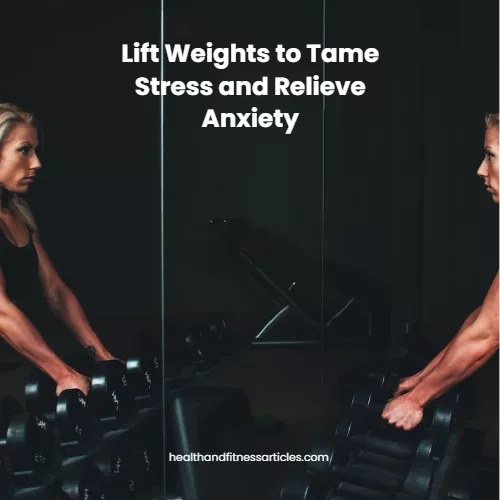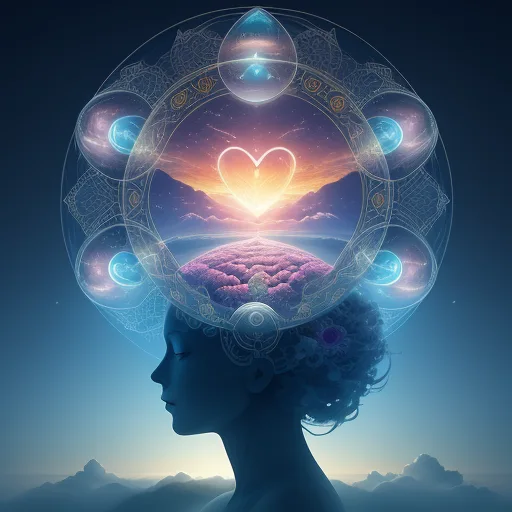Unlocking the Secrets of Reiki: Ancient Healing for Modern Wellness
Key Points
- Reiki, an energy healing technique that emerged in early 20th-century Japan, is one such practice. It’s based on channeling universal life energy to help achieve holistic health.
- Practitioners serve as conduits, flowing energy to the client to clear blockages and support relaxation, mindfulness, and emotional resilience.
- Reiki is most often used to help manage stress, relieve pain, and improve overall medical treatment. It should never be a substitute for professional healthcare.
- Scientific evidence on Reiki’s effectiveness is scant. Therefore, it’s essential to consider both the research findings and people’s real-life experiences when evaluating this therapy.
- If you’re considering trying Reiki, talk to your healthcare provider first. This is crucial if you already have chronic medical issues. Find qualified and ethical practitioners while you’re at it!
- Whether you are curious about Reiki or already practice it, incorporating it into your self-care routine can be a powerful and empowering experience. …do so with an open mind, clear communication, and a focus on your individual goals and needs.
- Lee, Hae (Author)
- English (Publication Language)
- 192 Pages – 11/15/2022 (Publication Date) – Zeitgeist (Publisher)
Last update on 2025-10-27 / Affiliate links / Images from Amazon Product Advertising API
Reiki is a gentle form of energy healing that originated in Japan in the early 1900s. Someone might use it as a gentle approach to support their body in relaxing and emerging from a state of stress.
A typical Reiki session would involve a trained practitioner gently placing their hands above or on the client’s body.
Parents report improvements in their children’s calmness, sleep, and tension.
Many combine the use of Reiki with conventional medical treatments, but it does not take the place of your MD’s recommendations.
Learning Reiki is a straightforward process, with concise courses and clear step-by-step guidelines. In the following paragraphs, you will learn what Reiki is. You’ll walk away with an understanding of what to expect in a session and how to find the right teacher or class to suit your needs.
What Exactly Is Reiki Energy?
Reiki, a type of energy healing, is considered a wellness practice rather than a medical treatment. It’s based on the concept that an unseen “universal energy” runs through every living thing. The term “Reiki” is derived from the Japanese” rei,” translating to universal, and “ki,” translating to life energy.
This practice is commonly adopted as a complementary therapy, used in conjunction with other holistic health practices.
While many people turn to Reiki for stress relief or emotional support, it’s essential to know that the concept of Reiki is rooted in spiritual traditions, not scientific evidence.
Unpacking Universal Life Energy
Unpacking Universal Life Energy. “Universal life energy” is the term generally used to describe this vital force that flows through all living things.
Reiki practitioners claim they can direct this energy through their hands to another individual, helping that person to heal.
Some clients experience heat or cold, tingling, or even a “pull” in areas where the hands are not in contact.
These impressions, though, are very unique to each individual. The concept is similar to “qi,” an ancient Chinese understanding of life force.
There’s no definitive scientific evidence that this type of energy exists or can be transferred. Even so, grasping this concept can allow others to feel more centered or relaxed.
A Glimpse into Reiki’s Origins
A Glimpse into Reiki’s Origins Reiki started in Japan in the early 1900s, with Mikao Usui acknowledged as its founder. Usui’s solution integrated spirituality with the practice of hands-on energy healing.
As the years passed, the practice spread worldwide and transformed. It was never divorced from its origins in the concept of channeling invisible energy.
My First Encounter: A Skeptic’s Journey
My First Encounter: A Skeptic’s Journey. So when I first experienced Reiki, I was a skeptic. It was a strange experience, the practitioner’s hands hovering over my body, the session done in total silence.
To my surprise, even in my skeptical mode, I felt incredibly relaxed after. Keeping an open mind allowed me to recognize that for many, Reiki can be a calming presence during stressful moments.
How Might Reiki Work?
Reiki is an ancient Japanese healing practice that embodies the concept of a universal life force energy, which is believed to influence all aspects of physical and emotional health.
This energy, often referred to as vital energy, moves throughout the body, and when it flows freely, individuals generally feel healthy, centered, and aligned.
However, disruptions or blockages can lead to stress, pain, or illness; thus, Reiki aims to unblock these obstructions and restore balance.
After a Reiki therapy session, it is frequently reported that individuals experience a profound sense of calm and deep relaxation, which may be particularly beneficial for alleviating stress or anxiety.
Some scientific research has even shown that Reiki treatments can be more effective than a placebo in reducing heart rate and blood pressure, highlighting their potential health benefits.
Reiki shares foundational concepts and principles with various other therapeutic techniques, including acupuncture.
Both modalities focus on the movement of energy within the body. While acupuncture uses needles to stimulate specific points, Reiki therapy employs light touch or even just hovering hands to facilitate similar stimulation.
As an alternative therapy, Reiki has gained traction among healthcare professionals and patients alike, especially those seeking integrative health solutions.
Its effectiveness in promoting relaxation and reducing stress makes it a valuable option for individuals dealing with chronic conditions or undergoing conventional treatments like chemotherapy.
Ultimately, Reiki serves as a complementary therapy that enhances overall well-being by addressing the energy force within.
This holistic approach aligns with the growing interest in alternative medicine, as more people explore the benefits of spiritual healing and energy work in conjunction with traditional care.
The Practitioner’s Role: Channel or Conduit?
A Reiki practitioner does not create healing energy; instead, they serve as a channel. They channel the universal life force energy to flow through the client’s body, helping to restore balance and promote healing.
Unlike many other energy healing systems, this process does not deplete the practitioner’s energy supply. Instead, the practitioner is considered to be a conduit, similar to the way that a wire transmits electricity.
Appropriate training and a solid ethical framework are essential. Practitioners must understand and adhere to boundaries and guidelines to create safe and practical sessions.
Exploring Potential Scientific Theories
The few scientific theories written about Reiki primarily address the effects of Reiki on the nervous system. While experts are unable to explain Reiki scientifically, many think its calming effect can help the body heal itself.
The placebo effect is another factor that’s impossible to ignore—sometimes, simply believing in the process can lead to tangible changes. It’s both research and personal stories that begin to illuminate just how Reiki could work.
The Mind-Body Connection: My View
Reiki has an innate understanding of the connection between mind and body. Reiki helps clients to feel grounded, centered, and deeply relaxed.
When we train the brain and body in conjunction, the health rewards are multiplied.
- 11 Singing Bowl Sounds: You can choose the sound of the bowling machine, to achieve full-body relaxation therapy. Song bowls make a perfect environment for deep meditation, creative thinking, and intuitive messages.
- Timer Functions: You can set timer options between 15/30/60/90/120mins to help you get to sound baths, yoga, meditation, or spiritual healing after which your device will automatically turn off or play all night. Our singing bowl machine can remember the last sound and volume when restarted, which means there’s no need to worry about re-setting.
- Volume Adjustable: The interval between singing bowl sounds depends on the volume, the higher the volume, the shorter the interval between each singing bowl. The lower the volume, the longer the singing bowl sound interval.
- Touch Control and Compact: Full touch buttons help you operate the sound settings and change the light color of our singing bowl machine. This singing bowl machine is compact and can easily travel with you everywhere. Bring to yoga classes, office, or retreats.
- Wide Applications: Great choice for yoga meditation, sound therapy, spiritual gatherings, and stress relief. Healing processes are initiated by entraining our brainwaves to synchronize with the perfect resonance of the bowls. You can easily play peaceful and mesmerizing tones on this unique Tibetan singing bowl machine. Perfect gifts for your friends, families, and sweetheart.
Last update on 2025-10-27 / Affiliate links / Images from Amazon Product Advertising API
What Is Reiki Primarily Used For?
Most popularly, Reiki is used as a non-invasive, gentle approach to healing and stress relief. Despite the lack of scientific evidence, people continue to seek it out for their emotional and physical well-being.
They are based upon the idea that practitioners can channel “universal energy” through their hands to a patient.
Its applications are far-reaching. It reduces chronic pain, including lower back pain and painful diabetic neuropathy, as well as promoting relaxation and spiritual development.
Many hospitals and clinics now offer Reiki as a complementary therapy; however, it’s essential to note that scientific evidence remains limited, and leading medical groups caution against its use for specific conditions.
1. Easing Stress, Finding Deep Calm
Reiki is mainly known for its calming effects, and most people leave a session in a deep state of relaxation. Practitioners lightly touch or hold their hands a few inches above the body, promoting deep relaxation and decreasing stress. The calm environment, meditative music, and gradual rhythm can promote relaxation and reduce mental stress.
For most people, the primary benefit is the profound relaxation it promotes, which in turn leads to improved sleep and reduced stress.
2. Supporting Emotional Well-being
Many seek out Reiki therapy to cope with emotional trauma or challenging periods in life. We’ve heard from clients that they feel less anxious or stressed out after a Reiki treatment session.
Stories from users, such as students handling exam stress or young professionals facing work challenges, demonstrate that Reiki can help build emotional resilience.
3. Aiding Comfort in Pain Management
Reiki serves as a complementary therapy to standard pain care. Only a few small studies indicate that Reiki treatments may be beneficial for relieving chronic pain, and even those show mixed results.
This holds even when it’s part of palliative care, which focuses on comfort.
4. Complementing Your Healthcare Plan
Perhaps the most common use of Reiki therapy today is as a complementary therapy to traditional medicine.
It’s wise for professional Reiki practitioners to work alongside healthcare professionals while maintaining clear communication with their healthcare team.
5. Nurturing Inner Peace, Spirituality
For many, Reiki therapy serves as a spiritual path. The studio space, calm and meditative, offers a medium for participants to tune inward, cultivating self-awareness and the health benefits of inner peace.

Your First Reiki Session Unveiled
Your first Reiki session will be an opportunity to experience a profound, calming connection to your energy. This is how Reiki helps you manage stress and improve your quality of life. It provides a gentle and healing journey for anyone curious to explore.
The most important thing is to find a space where you feel safe and calm. This makes surrendering so much easier. Your Reiki practitioner should be your partner in getting you to communicate what you need.
Setting the Scene: What to Anticipate
A standard Reiki space is typically calm, with low lighting, gentle music playing in the background, and a comfortable table for relaxation.
You’ll likely smell fresh air or soft scents. This environment allows your mind and body to feel more at ease.
They intend to create an environment in which you feel comfortable enough to begin healing. At the beginning of the session, the practitioner usually inquires about what you hope to achieve or what concerns you may have.
They assist you in establishing a specific intention for your session.
This is a crucial step to ensure you get the most out of the experience.
During the Session: Common Sensations
Unlike massage, during Reiki, you stay fully clothed. The practitioner gently rests their hands or hovers them over locations such as your head, chest, or arms.
Almost everyone experiences warmth or tingling, and some even describe a wave of heat or coolness.
Others meditate or doze off during the session. There’s absolutely no right or wrong way to feel—some people think everything, some people feel nothing. Keeping an open mind and heart to your own body’s response is most important.
Afterglow: Post-Session Feelings and Self-Care
After, people typically report a sense of peace, clarity, or lightness—sometimes for several days or weeks.
Drinking plenty of water, getting adequate rest, and engaging in some light movement will go a long way in extending these positive effects.
Journaling can be an excellent tool to help you process the experience, discover what you’ve learned, and what you need now.
- 5-in-1 Maderoterapia Kit: We put the most effective wooden therapy massage tools in one kit. You will get 1*Wood Swiss Cup, 1*Mushroom Massager, 1* Engraved Roller Stic,1*Cubed Roller Stick,1*Contouring Board.You will get extra bonus from ours: 1*Professional Instruction Booklet.
- Highest Craftsmanship Standards: When it comes to our maderotherapy kit, we make a point of using nothing but superb quality, precision-cut sturdy, and functional materials, and state-of-the-art production processes. It is artfully beveled and sanded smooth. No burr and won’t hurt you when using it.
- Deeply Massage the Muscle Layer: The wood massage tools can penetrate deep into the muscle and fascia layer, quickly relieve muscle soreness, stiffness and other uncomfortable symptoms, improve the state of the body. Long-term use can make the body more relaxed and comfortable, muscle recovery faster, help you quickly recover physical strength, improve the effect of sports.
- More Effective Massage: The Mushroom massager can be moved in a circular motion easily with 13 massage sticks and give you a more effective massage. Engraved and Cubed Roller Stick helps to break apart waste. The unique wood cup massager will provide two massages one time. A contouring board is used to contour the body and tighten and tone the skin.
- Why Choose Komogir: You will find all the answers about wood therapy in our Professional Instruction Booklet. You can enjoy a SPA any time anywhere. It is also a considerate gift for your beloved ones, so as to help them stress down, regain energy, and rejuvenate their bodies.
Last update on 2025-10-27 / Affiliate links / Images from Amazon Product Advertising API
Does Reiki Genuinely Make a Difference?
Reiki has a magnetic appeal for those seeking alternative methods of self-care, particularly in the realm of complementary therapies. Its effectiveness, though, remains a topic of debate among healthcare professionals.
By considering both the quantitative data and the qualitative personal stories, including insights from Reiki research, we can gain a more comprehensive picture.
Weighing the Scientific Evidence Available
Only a handful of studies have followed Reiki’s impact on pain and anxiety. For example, a 2017 meta-analysis concluded that individuals experienced decreases in pain and anxiety following Reiki.
Small sample sizes or methodological flaws frequently limit the research.
There’s no evidence from extensive, rigorous studies that Reiki has a significant impact on health. One major problem is that the very premise of Reiki—life force energy—has not been scientifically proven.
Skeptics argue that any beneficial outcomes could be attributed to the placebo effect.
Yet, many people experience an improvement in their wellness despite science’s inability to explain the myriad ways why.
At this time, the scientific community recognizes Reiki’s benefits as potential, but not definitive.
The Impact of Personal Experiences
Clients often report feeling calmer, lighter, or simply more energetic after a session. One participant described it as a “little tingle of electricity” that remained even post-treatment.
Stories such as these are the rule, not the exception, and they’re essential to send to your people.
While these anecdotal experiences do not serve as a substitute for research, they effectively illustrate why Reiki continues to attract interest.
Each individual’s response can vary, which is why some people swear by it and others don’t feel anything.
My Take: Where Belief Meets Benefit
My Take Belief appears to make an enormous difference in Reiki’s purported benefits. If they expect it to work, that might set the stage for a positive result.
Even Reiki experts will tell you that mindset is what will drive the experience, even more than the hands-on practice itself.
Everyone needs to consider both the scientific evidence and their personal beliefs, and then decide for themselves whether Reiki is appropriate.
Is Reiki Safe for Most People?
Reiki is gaining interest as a subtle but effective way to promote health. As an integrative therapy, clinicians and patients alike are eager to understand the safety of Reiki, particularly when used in conjunction with other treatments or medical care.
The bottom line: Most experts say that Reiki is safe for most individuals. It does not produce significant adverse events. Instead, clients typically report feeling calm and relaxed following a treatment.
Occasionally, they sense a gentle warmth or tingling, but these sensations are not uncomfortable.
Even so, it is not a panacea. Reiki should never take the place of medical care. It’s most effective when combined with other effective treatments.
Many are attracted to Reiki due to its noninvasive nature. It is very calming for individuals who are anxious about touch in medical contexts. The evidence behind Reiki is less clear-cut. Minimal research is available.
Some small studies suggest benefits such as reduced stress or improved mood. Other studies find no significant effect. That’s a sign that much more research is needed before we know the whole story. Some skeptics argue that Reiki doesn’t work in any way.
That’s why it’s essential to view it as a complementary aid rather than a panacea.
Understanding Potential Mild Reactions
Some people experience fatigue, thirst, or feelings after a Reiki session. These mild reactions tend to clear up quickly.
Drinking plenty of water and getting sufficient rest can help the body adjust.
If a client is feeling out of sorts or uncomfortable in any way following a session, it is wise to communicate that with the Reiki practitioner.
Straightforward communication allows them the opportunity to pivot and adjust course while there’s still time.
When to Consult Your Doctor First
For individuals with serious health concerns or those starting a new course of treatment, consult a physician before undergoing Reiki.
If they have significant symptoms or are on heavy medication, expert guidance is essential.
Honest communication between clients, doctors, and Reiki practitioners is necessary for everyone’s safety.
Considering Reiki: Practical Next Steps
Moving forward with Reiki involves more than just registering for a class. It requires some research, a good amount of planning, and a definite idea of what you want to get out of it, whether you are a little bit curious or very excited.
Welcome!
If you’re prepared to take the plunge and experience it firsthand, understanding what to look for will ensure you get the most out of your experience.
Finding a Credible, Resonant Practitioner
Seek practitioners with well-defined training and transparent, trustworthy reviews. Some even advertise their credentials on their websites, including certification from a nationally recognized Reiki school or professional organization.
Gathering recommendations can be a great starting point. Asking friends and family for trust recommendations or reaching out to wellness communities is beneficial. A genuine connection with your practitioner is essential.
A feeling of trust and comfort during your initial conversation is a positive indicator!
Understanding Session Costs and Value
Typical single sessions range from $40 to $100. Group or introductory classes may be less expensive. Some offer free demo sessions or sliding-scale rates.
Cost varies widely depending on your location and the practitioner’s level of experience. It’s not how much a session costs that defines its value—it’s how you feel during and after that that matters.
Most people appreciate a tranquil atmosphere, including gentle music and comfortable surroundings, as contributing to their healing.
Reiki’s Place in Modern Wellness
These days, Reiki can be found in hospitals, wellness centers, and private practices. It’s usually included within stress relief or holistic care.
Most people view Reiki as part of their health toolkit, like yoga or a daily meditation practice.
My Advice: Trust Your Inner Guidance
My recommendation is to follow your intuition. Find practitioners who resonate with you personally and professionally.
Approach the process mindfully, be open to new experiences, and most importantly, tune in to your comfort level.
Our Conclusion
Reiki offers a gentle, hands-on approach to promote relaxation and balance. People tend to go to it when they want to meditate or reduce stress, or step away from the frenetic pace of the day.
You may feel hot, lightheaded, or simply deeply relaxed after treatment. No expensive equipment or advanced technical expertise required.
What we do hear is relief from so many who share stories of lighter moods, improved sleep, or decreased pain.
Since the risks remain low for most, it complements many other self-care practices well. For anyone interested, a first session provides an authentic experience of what Reiki can provide.
To begin, connect with a trained Reiki practitioner.
Discuss your impressions and questions with others who have experienced Reiki, or participate in a group to learn more collectively.
- 3 Calibrated Tuning Forks for Healing – Includes 128 Hz, 256 Hz, and 512 Hz tuning forks, each carefully tested to ensure no deviation. Made from high-quality aluminum alloy, they deliver durable performance and a long-lasting, pure sound—ideal tuning forks for healing, sound therapy, and meditation.
- Complete Sound Healing Instruments Kit – Comes with 3 forks, mallet, insert, and velvet pouches in a premium portable gift box. A versatile tuning forks for healing set of sound healing instruments that fits perfectly into any yoga set or meditation accessories collection.
- Balance, Cleanse & Chakra Healing – Use this tuning fork set to balance energy centers, align chakras, and cleanse negative energy at home or in the studio. Perfect for chakra healing, reiki, and wellness routines; a thoughtful choice for spiritual gifts.
- Versatile Use Beyond Healing – Not only for spiritual practice, these frequency healing devices are also useful in classroom science experiments, physics demonstrations, and even as basic tuning forks for music, making them multifunctional and practical.
- Safe & Easy to Use on the Body – Apply vibrations directly during massage, relaxation, or reiki sessions. A natural way to support stress relief, calmness, and meditation—helpful as anxiety relief items or paired with healing crystals for deeper resonance.
Last update on 2025-10-27 / Affiliate links / Images from Amazon Product Advertising API
Frequently Asked Questions
What is Reiki?
Reiki is a gentle energy healing practice that originated in Japan, where a professional Reiki practitioner uses their hands to help balance the body’s vital energy and support the body’s natural healing processes.
Is Reiki scientifically proven?
Is Reiki scientifically proven? While some small studies suggest that Reiki treatments can help reduce stress and increase feelings of relaxation, further research on Reiki is needed before its positive health benefits can be established.
Can anyone receive Reiki?
Reiki therapy is safe, soothing, non-invasive, and non-manipulative, making it an appropriate complementary treatment for individuals of all ages and backgrounds.
What can Reiki help with?
Today, people use Reiki therapy to help with stress reduction, relaxation, and healing, while many others seek its health benefits for relief from pain, anxiety, or emotional stability.
Do I need to prepare before a Reiki session?
Before a Reiki therapy session, it’s essential to wear loose-fitting clothes and arrive with an open mind, as your professional Reiki practitioner will guide you through the process.
How long does a typical Reiki session last?
Typically, a Reiki therapy session lasts anywhere from 45 to 60 minutes, though some may be shorter or longer, depending on the professional Reiki practitioner and your personal needs.
Are there any side effects from Reiki?
Since Reiki therapy is such a gentle practice, it is considered safe, and even beneficial side effects are rare. After a Reiki treatment, it’s common for people to feel relaxed, emotional, or tired, so don’t be alarmed.











